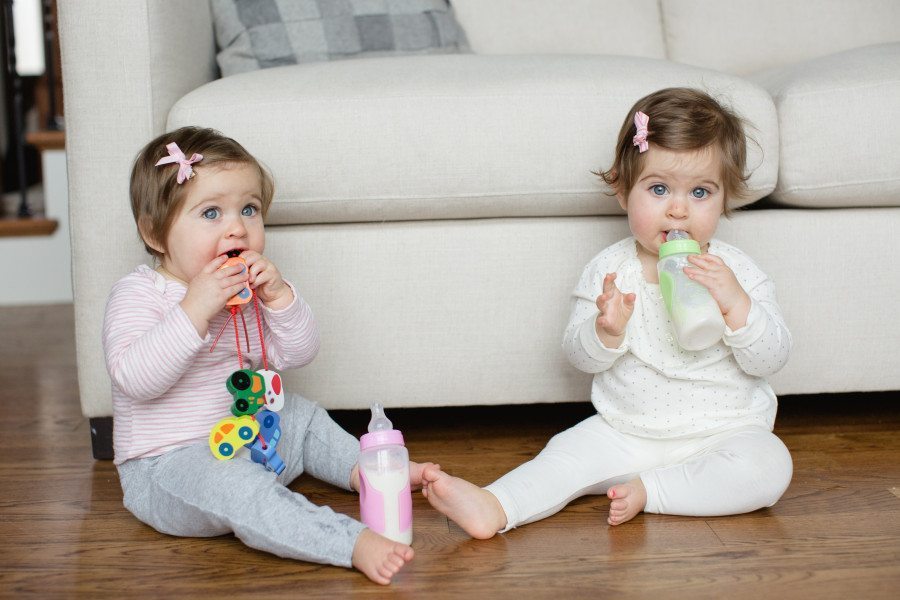Last updated on April 26th, 2024 at 10:45 pm
We support ALL of our mommies. I know there are a variety of strong opinions when it comes to the subject of bottle feeding vs. breast feeding, but the truth is each parent and doctor must do what is best for each baby individually. It is NOT a failure to bottle feed your baby. It’s a tough decision to make, it may not be what you pictured or planned for your baby (but hey who pictured life with multiples to begin with right?) Multiples teach you to go with the flow, and sometimes that flow comes from a bottle. So here are some basic tips for bottle feeding your baby.
What Type of Bottle Will I Need?
That depends a lot on the individual baby. You want a bottle that will keep as much air as possible from getting into your baby’s tummy and cause painful gas. If you use bottles second-hand make sure that you buy all new nipples. Never give a baby a nipple that is cracking or broken in any way. Check the flow of the nipple to make sure it is appropriate for your baby. Here are some guidelines to choosing nipples.
- Stage 1 = slow is for newborns. There is only one hole in this nipple so that the formula will come out very slowly.
- Stage 2 = medium flow is for babies 3-6 months old.
- Stage 3 = fast is for babies over 6 months. You may never use these and choose to instead move straight to sippy cups.
- The Y-cut is a nipple where the hole is cut wide to so your baby can drink thicker drinks such as formula with a little bit of cereal in it.
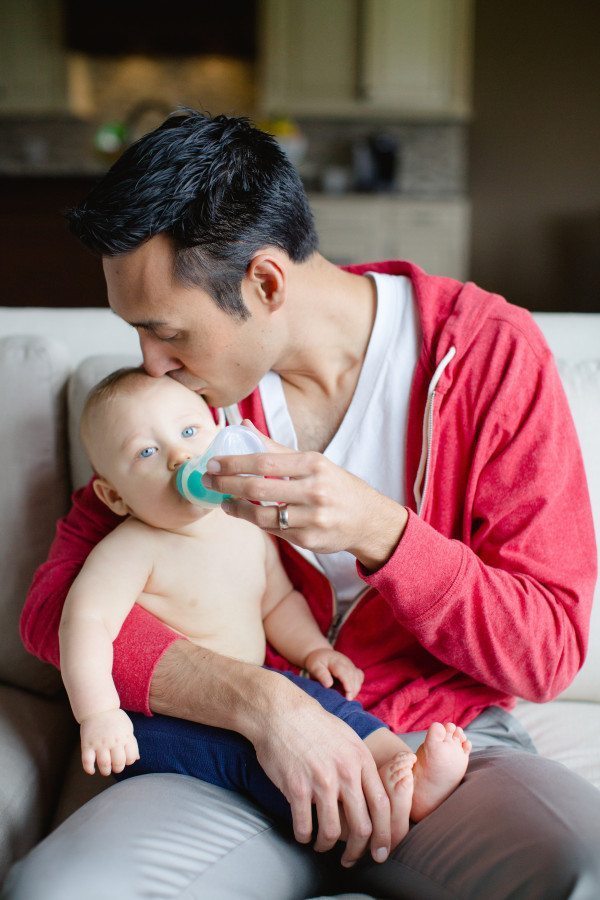
How Many Bottles Will I Need?
Most moms recommend to have enough bottle to last you a whole day or at least a half a day. Yes this means having 8-16 bottles in your house but it is worth it to only have to wash bottles once or twice a day to save you some time and energy. Make sure you know which bottles are going to work best for your babies BEFORE you buy a whole bunch of them.
Do I Need to Sterilize My Baby’s Bottles?
Yes. Before the first use, you’ll need to sterilize nipples and bottles in a rolling boil for 5 minutes. You can also sterilize them with a counter top sterilizer or in a microwaveable sterilizing bag, but boiling works just as well and costs nothing. After this you can wash them with hot soapy water or run them though the dishwasher after every use.
What Sort of Formula Should I Buy for My Baby?
Discuss this with your babies’ doctor. Do not buy formula in bulk since you may have to change to a different type at any moment.
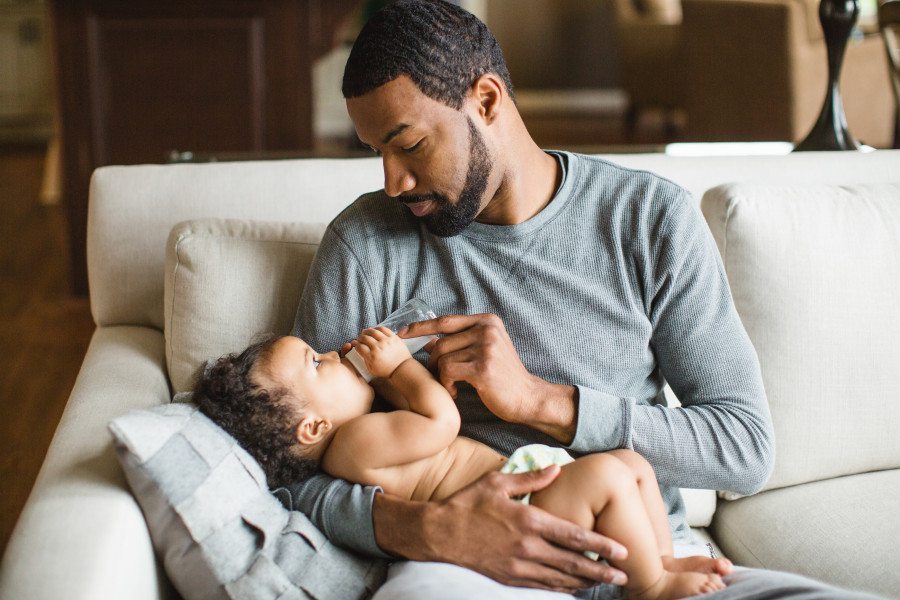
How Do I Prepare Formula?
Follow the instructions on the formula package or the direction of your babies’ doctor for the proper formula to water ratio. Fill each clean and dry bottle with the correct amount of formula so that all you need to do is add room temperature water. Formula may also be prepared ahead of time. Store prepared formula in the refrigerator for up to 24 hours to prevent bacteria from forming. (Any ready-to-feed or concentrate formula after 48 hours.) Do not leave prepared formula out for longer than 1 hour. Discard any unused formula after the feeding. To make sure not to be wasteful try not to over fill your babies bottle with more than he or she can drink.
How Do I Heat a Bottle?
Refrigerated formula/milk doesn’t necessarily have to be warmed up for your baby, but some infants prefer it at least at room temperature. You can skip this step if your babies don’t mind drinking room temperature milk or even cold milk. NEVER heat a bottle in the microwave! All you need to do is simply fill up a cup or small bowl with hot tap water and set the bottle in it for a couple minutes. I would usually change my twins diapers during this time. To check the temperature of the milk express a little bit on the inside of your wrist.
Watch the video for a couple more great bottle feeding tips about hot to get your baby to take a bottle and learn how to position your babies for a feeding.
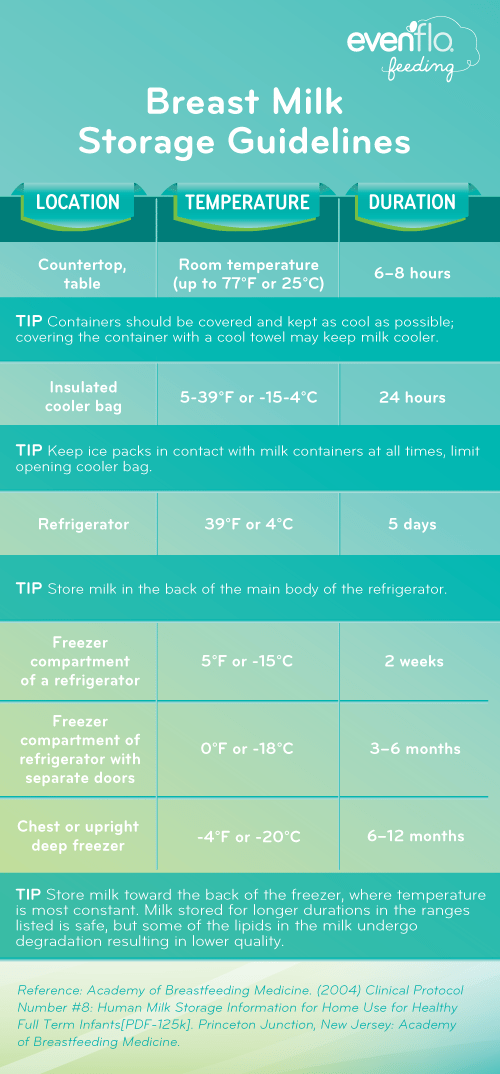
What You Need to Know About Pumped Breast Milk
- You will need plenty of storage containers with tight fitting lids to store the expressed breast milk.
- Always write the date on the storage container before you store the milk in the refrigerator or freezer. If your children are in a child care setting make sure to label the container with the childs name as well.
- Make sure to follow the storage and usage safety guidelines shown here courtesy of Evenflo Feeding. Thawed milk is safe in the refrigerator for 24 hours but may not be refrozen.
We wish you and your babies many happy feedings!
Related Articles
- Bottle Feeding Your Twins
- The Do’s & Don’ts of Bottle Feeding
- Bottle Feeding Basics for Newborn Twins
Are You a New Twin Parent?
Check out Natalie Diaz’s book:
“What To Do When You’re Having Two
The Twin Survival Guide From Pregnancy Through the First Year”
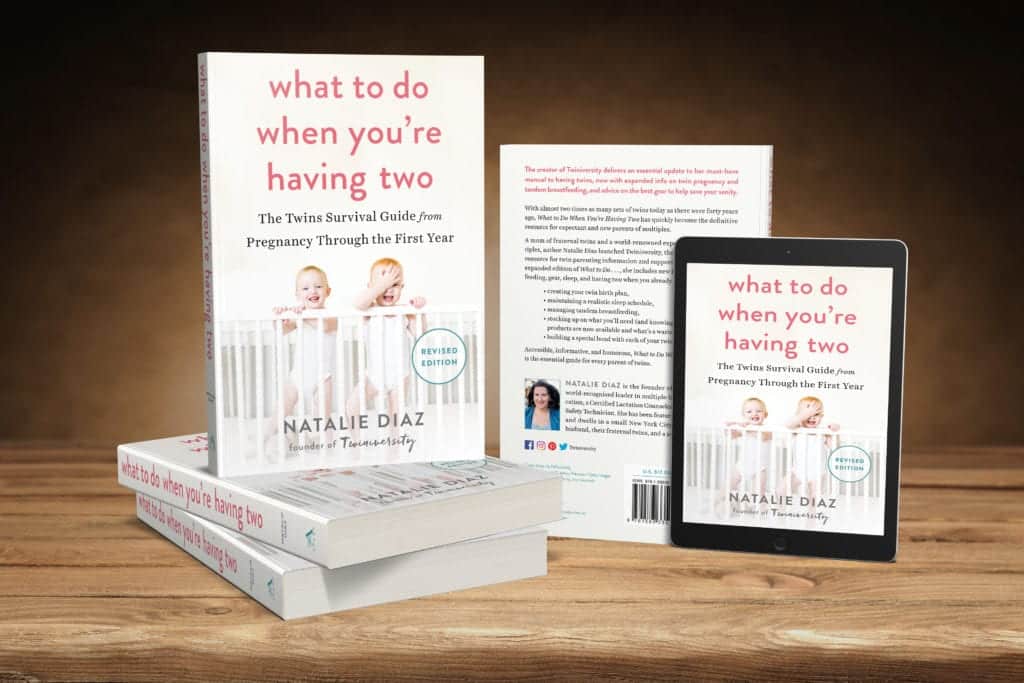
In What to Do When You’re Having Two: The Twins Survival Guide from Pregnancy Through the First Year, national twins guru and founder of Twiniversity (and twin mom herself!) Natalie Diaz provides a no-holds-barred resource about life with twins, from pregnancy and birth all the way through your duo’s first year of life.
Accessible and informative, What to Do When You’re Having Two
is the must-have manual for all parents of twins.

Have you taken your expecting twins class yet? We offer a great class on demand so you can take it on your own schedule! There are so many video modules covering everything from your twins’ baby registry to your first week at home with twins! Sign up today to get started before your twins arrive.

